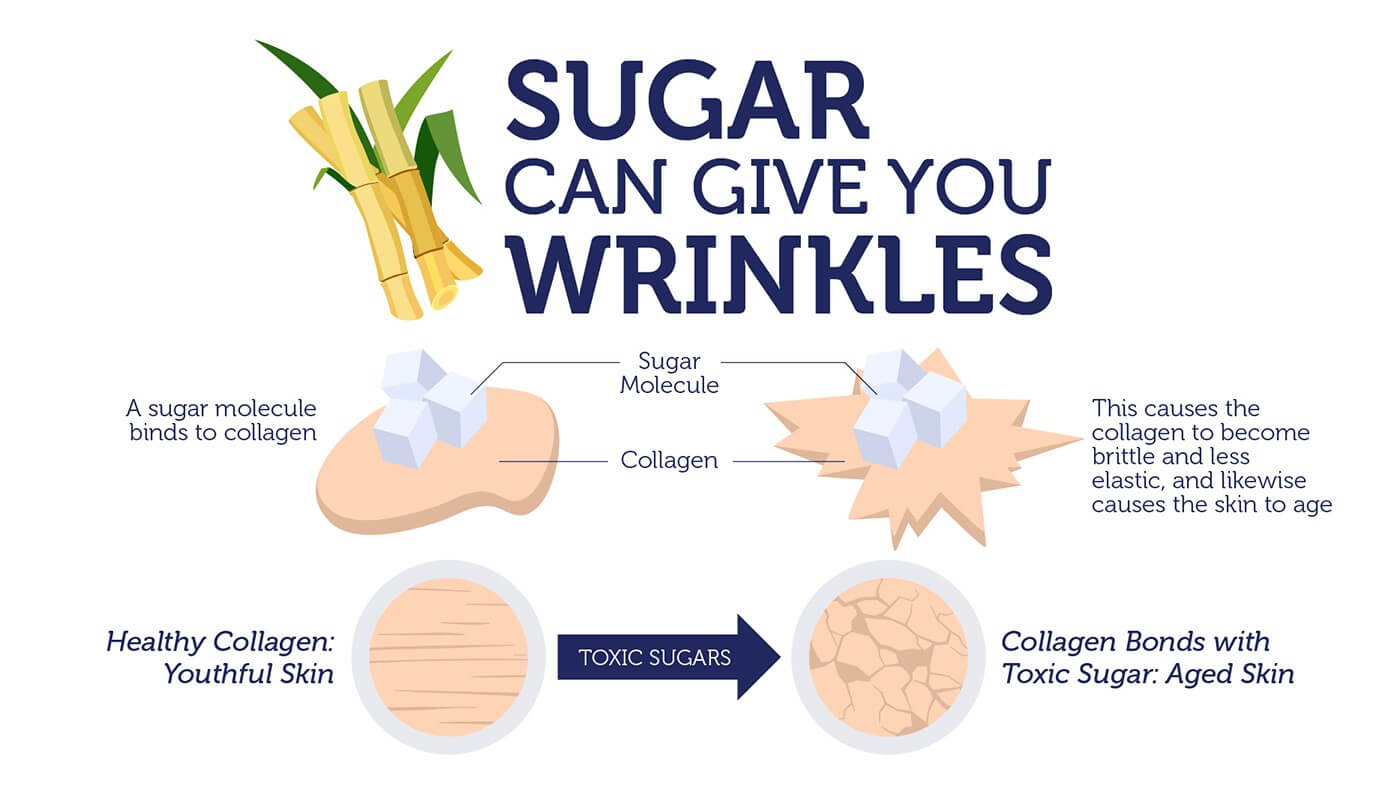Desserts – to some they are the epitome of indulgence. Nothing can compare to the euphoria you feel as you sink your teeth into a delicious molten lava cake.
We are all aware of the implication of consuming too much sugar – diabetes, obesity. But, did you know that sugar also makes your skin age faster?
Advanced glycation end products (AGEs)
Advanced glycation end products or AGEs are made by a process called glycation. This takes place when sugars are randomly attached to proteins and fats, disrupting their regular functions.
Glycation shouldn’t be confused with glycosylation, a beneficial reaction controlled by enzymes that change proteins into their functional form.
AGEs contribute to conditions like diabetes, Alzheimer’s, heart disease, and true to their name lead to premature aging, especially of the skin.
The process of glycation
We consume a lot of AGEs through our diet, mainly because many modern day foods are generated using heat, which promotes glycation. Dietary AGEs are relevant to diabetes and cardiovascular disease.
But, wrinkles and fine lines are the results of glycation that happens inside our bodies. Two proteins, collagen and elastin, found in the dermis layer of our skin are prime targets of glycation. This is because these proteins are long-lived and also exposed to high sugar levels.
Glycation alters the flexibility of collagen, and this stiffening affects many of the organs supported by it.
Destroying the “AGEed” proteins
The only way to get rid of AGEs once they have formed, is by destroying the “AGEed” protein. However, glycation itself makes proteins resistant to breakdown. This accumulation of AGEs is responsible for the changes we see in our skin, from the loss of elasticity, to the appearance of fine wrinkles, and reduced thickness of the skin.
Genetically disadvantaged
So if we didn’t have enough to feel guilty about when we reach for a well-earned dessert, it appears that some of us are genetically at more of a disadvantage when it comes to preventing AGEs.
This is due to variation in a gene called GLO1. The glyoxalase I enzyme, encoded by the GLO1 gene, helps stop AGEs from forming. Increasing glyoxalase I levels can dramatically reduce the formation of AGEs.
Unfortunately, as we age, our glyoxalase I enzyme activity decreases, which is why the amount of glycated collagen in our skin increases by 33% between the ages of 20 and 80.
Some of us are even more unlucky and inherit a genetic variant of GLO1, called rs1049346, which results in a significantly lower production of the glyoxalase I enzyme. People with this variant have skin that appears to age much more quickly because of the extra accumulation of AGEs.
Dietary sugar can further enhance glycation, which is why a high sugar diet is much more detrimental to the skin of a person with rs1049346 than a person with the normal version of GLO1.
Curbing your sugar intake
While aging may be an inevitable fact of life, you will never be able to find a person who wants to look old. So, if you intend to keep your skin from aging prematurely, and also carry the defective version of GLO1, it’s time to curb your sweet tooth. The GLO1 variant is included in the DNA Skin Health Test.
Exercise may melt off the sugar that makes its way to your waist, legs or back, but no amount of exercise can reverse the damage AGEs do to your skin.















